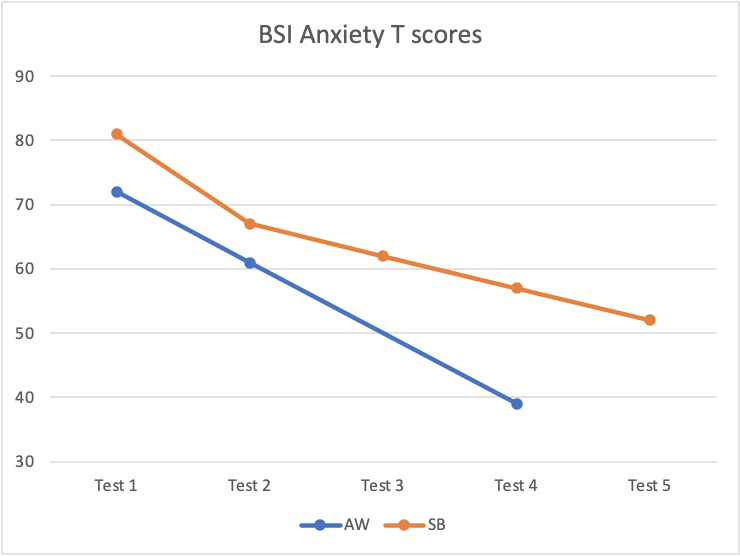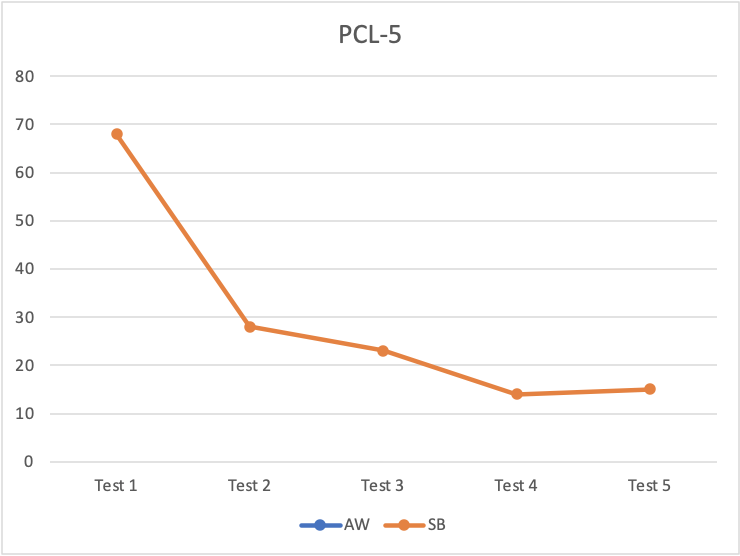 Letter from Jean Alvarez, Ed.D.
Letter from Jean Alvarez, Ed.D.
As we are writing this, in July of 2021, there have been 33,100,000 non-fatal cases of Covid-19 in the United States, and 179,000,000 worldwide. Most of those individuals will fully recover soon after the acute phase of their illness has ended, but a significant minority (reports range from 10% to 33%) will continue to suffer from non-acute sequelae of the disease—a condition known as Long Covid.
Symptoms of Long Covid include obviously medical issues such as cardiac, pulmonary and neurological symptoms, but the phenomenon also frequently includes a cluster of other concerns, not easily categorized or traceable to Covid-19. These include cognitive impairment, profound fatigue, insomnia, and psychological concerns—particularly anxiety, depression and PTSD-like symptoms.
While not all who experience these post-acute sequelae will develop all of these symptoms, the staggering numbers of those who will experience some (three to ten million in the United States, and 14 to 45 million worldwide)mark this as a major crisis for our health systems and for human well-being.
We are interested in this problem not just because of its size and the unprecedented challenges it presents, but also because we are struck by the similarity of the cluster of non-medical Long Covid symptoms to another condition we have studied.
Cancer and/or cancer treatment frequently gives rise to a cluster of symptoms not easily explained by either the disease itself or treatment regimen. Colloquially known as “chemobrain” (and more formally, by any of several more precise names, including Postcancer Cognitive Impairment, or PCCI), this cluster most commonly includes cognitive loss, fatigue, insomnia, and anxiety and/or depression. These symptoms tend to arise, or at least to be recognized, only after the immediate treatment has ended and both patient and oncologist are expecting a return to a pre-cancer state of health.
We are intrigued by this similar phenomenon among post-cancer and post-Covid patients. Researchers who gather through the International Cognition and Cancer Task Force continue to study Postcancer Cognitive Impairment, trying to understand the mechanism by which these symptoms arise; it may be a number of years before post-Covid researchers have enough information to develop and test hypotheses about causative factors. However, we have looked at the interventions developed for PCCI to see whether they suggest avenues that might alleviate the suffering of at least some Covid Long Haulers
One way of classifying interventions for PCCI is to identify them as either compensatory or restorative. Most of the suggestions listed on websites of organizations such as the American Cancer Society or the Memorial Sloan Kettering Cancer Center are compensatory—that is, they are strategies to help the cancer survivor compensate for the cognitive losses they experience, without actually correcting those losses (e.g. creating daily To-Do lists, always putting keys in the same designated place). A few are a mix of compensatory and restorative (e.g. several centres have developed programs focusing on Cognitive Behavioral Therapy). One, reported in Integrative Cancer Therapies in 2013, seems to be restorative—after EEG Biofeedback sessions, the survivors reported significantly reduced cognitive, fatigue, sleep and emotional symptoms.
Our intent in this proposed study is to explore whether the same EEG Biofeedback intervention used in the 2013 study will be similarly helpful in addressing the cognitive, fatigue, sleep and emotional symptoms experienced by Covid Long Haulers.
Jean Alvarez, Ed.D.
Long COVID Preliminary Data
These are the data for our first two participants, who followed the protocol (two sessions/week for ten weeks) very closely. Though for some measures higher numbers indicate improvement, while for others, lower numbers indicate improvement, all trends shown on these graphs are in a positive direction.
We have data for the next five participants, and they trend in a positive direction as well, but not as clearly. We did not follow the protocol as closely with those participants, partly because in some cases their schedules did not permit it, and partly because the sudden death of my colleague’s husband led us to close the office for several extended periods. Those data are available for review.
You may note that SB has a fifth data point, while AW (the first participant) does not. As SB was completing the protocol, we wondered whether improvements that developed over the 20 sessions of neurofeedback would be maintained once the neurofeedback ended. SB’s fifth assessment occurred one month after her final neurofeedback session. On all but one of the assessments, improvements were not only maintained but there appeared to be some continued residual improvement.

Note: The higher number represents better cognitive functioning
Note: The higher number represents better cognitive functioning
Note: The higher number represents better cognitive functioning
Note: The higher number represents less fatigue.
Note: The higher number represents greater somatization.
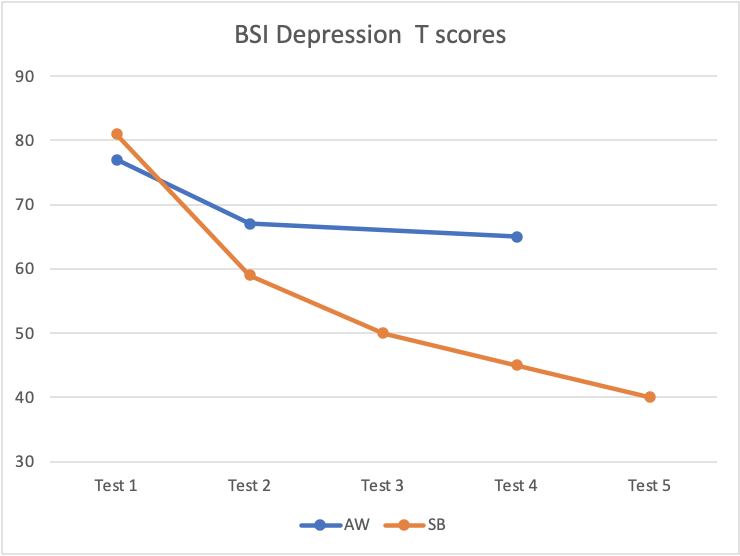
Note: The lower number represents less depression.
Note: The lower number represents less anxiety.
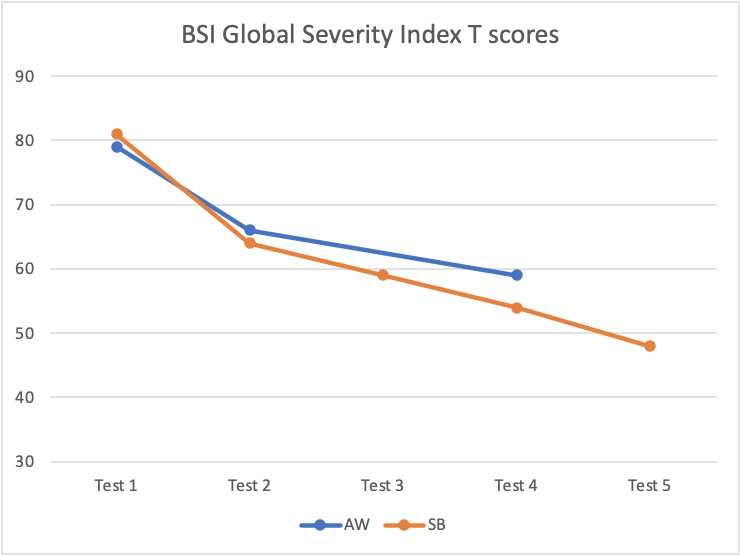
Note: The lower number represents fewer symptoms.
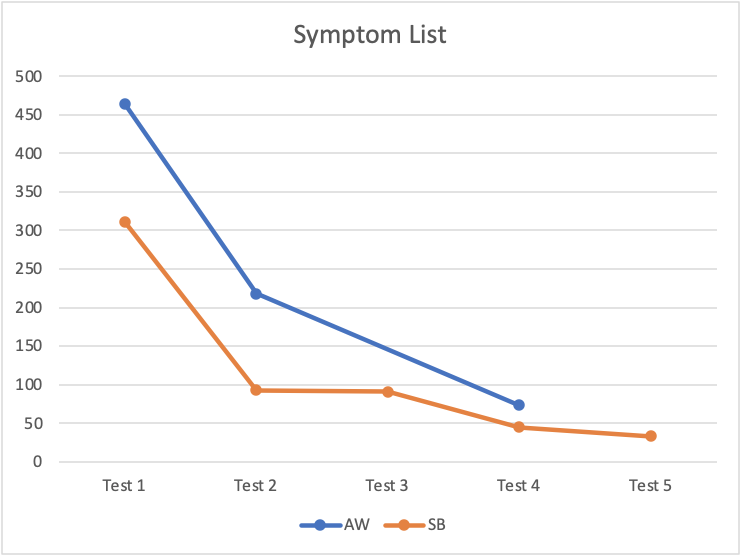 Note: The lower number represents fewer symptoms.
Note: The lower number represents fewer symptoms.  Letter from Jean Alvarez, Ed.D.
Letter from Jean Alvarez, Ed.D.





